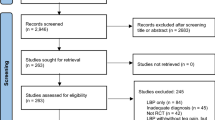Abstract
Background: Hand size is an important variable to consider when designing hand tools. Laparoscopic surgical instruments have been reported to cause hand and upper extremity discomfort. This study investigates the correlation between surgical glove size, preexisting musculoskeletal problems, and difficulty using laparoscopic instruments. Methods: Approximately 11,000 questionnaires were sent to SAGES, AAGL, and AWS members. Questions included basic demographic and practice data, surgical glove size, the presence of musculoskeletal problems, and the perceived difficulty using several types laparoscopic instruments. There were 726 responses (from 159 women and 567 men). Subjects were grouped by hand size (Small ≤6.5, Medium 7.0–7.5, Large >7.5; female group only: Small ≤6.0, Medium 6.5, Large >6.5). ANOVA was used to test for differences between groups. Results: The percentage of time subjects reported having difficulty using all laparoscopic instruments was greater for the Small glove size group compared to both the Medium and Large groups (p < 0.001). In females, the scissors and staplers were more difficult to use for the Small and Medium glove size group compared to the Large group (p < 0.001). Subjects who reported musculoskeletal problems (n = 145) performed a significantly greater percent of laparoscopic cases and found the stapler and graspers difficult to use for a greater percentage of time than those not reporting problems (n = 559). Conclusion: Hand size is a significant determinant of difficulty using laparoscopic surgical instruments. Individuals using glove sizes 6.5 or smaller experience significantly more difficulty using common laparoscopic instruments, and in particular laparoscopic staplers. Manufacturers of surgical hand tools should consider hand size when designing future surgical instruments.





Similar content being viewed by others
References
(2000) AMA Women in Medicine Data Source 2001/2002. JAMA 284: 1159–1161
R Berguer (1998) ArticleTitleSurgical technology and the ergonomics of laparoscopic instruments. Surg Endosc 12 458–462 Occurrence Handle10.1007/s004649900705 Occurrence Handle1:STN:280:DyaK1c3ktVKgsA%3D%3D Occurrence Handle9569372
R Berguer D Forkey W Smith (1999) ArticleTitleErgonomic problems associated with laparoscopic surgery. Surg Endosc 13 466–468 Occurrence Handle10.1007/s004649901014 Occurrence Handle1:STN:280:DyaK1M3ksVOnug%3D%3D Occurrence Handle10227943
J Blackwell K Kornatz E Heath (1999) ArticleTitleEffect of grip span on maximal grip force and fatigue of flexor digitorum superficialis. Appl Ergon 30 401–405 Occurrence Handle10.1016/S0003-6870(98)00055-6 Occurrence Handle1:STN:280:DyaK1Mvht1Wjtw%3D%3D Occurrence Handle10484275
R Goosens MA Van Veelen (2001) ArticleTitleAssessment of ergonomics in laparoscopic surgery. Minimally Invasive Ther Allied Technol 10 175–179 Occurrence Handle10.1080/136457001753192303
Greenberg L, Chaffin DB (1977) Workers and their tools: a guide to the ergonomic design of hand tools and small presses, Pendell, Midland, MI, pp xiii, 142
LF Horgan DC O’Riordan N Doctor (1997) ArticleTitleNeuropraxia following laparoscopic procedures: an occupational injury. Minimally Invasive Ther Allied Technol 6 33–35
SL Johnson (1993) ArticleTitleErgonomic hand tool design. Hand Clin 9 299–311 Occurrence Handle1:STN:280:ByyB1cnitVc%3D Occurrence Handle8509467
MA Van Veelen DW Meijer (1999) ArticleTitleErgonomics and design of laparoscopic instruments: results of a survey among laparoscopic surgeons. J Laparoendosc Adv Surg Tech 9 481–489 Occurrence Handle1:STN:280:DC%2BD3c%2Fps1eluw%3D%3D Occurrence Handle10632508
Acknowledgments
The authors thank the SAGES Board of Governors for supporting this study and the SAGES administrative staff for the preparation and mailing of the questionnaires and for coding the responses.
Author information
Authors and Affiliations
Corresponding author
Rights and permissions
About this article
Cite this article
Berguer, R., Hreljac, A. The relationship between hand size and difficulty using surgical instruments: A survey of 726 laparoscopic surgeons. Surg Endosc 18, 508–512 (2004). https://doi.org/10.1007/s00464-003-8824-3
Received:
Accepted:
Published:
Issue Date:
DOI: https://doi.org/10.1007/s00464-003-8824-3




